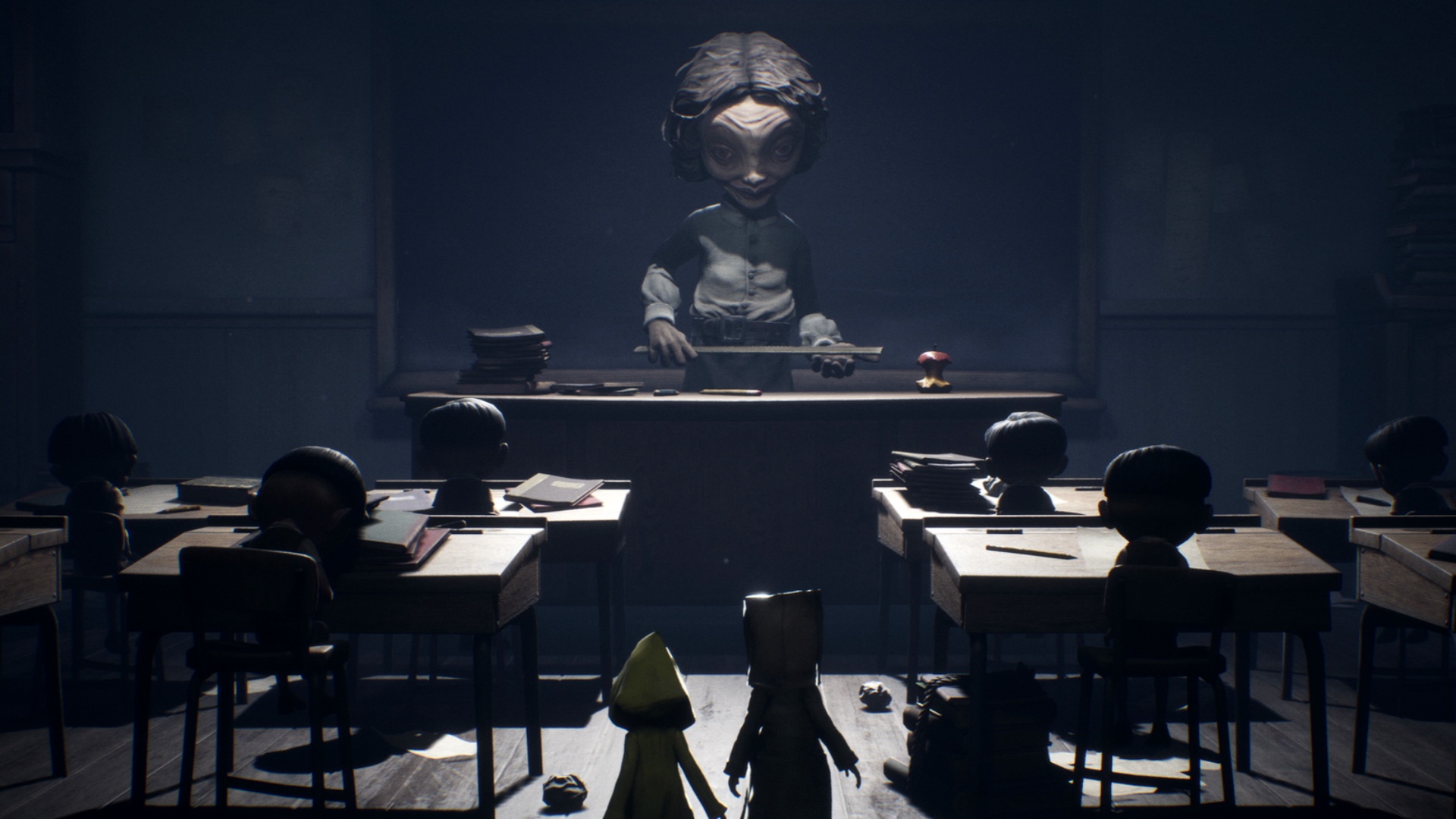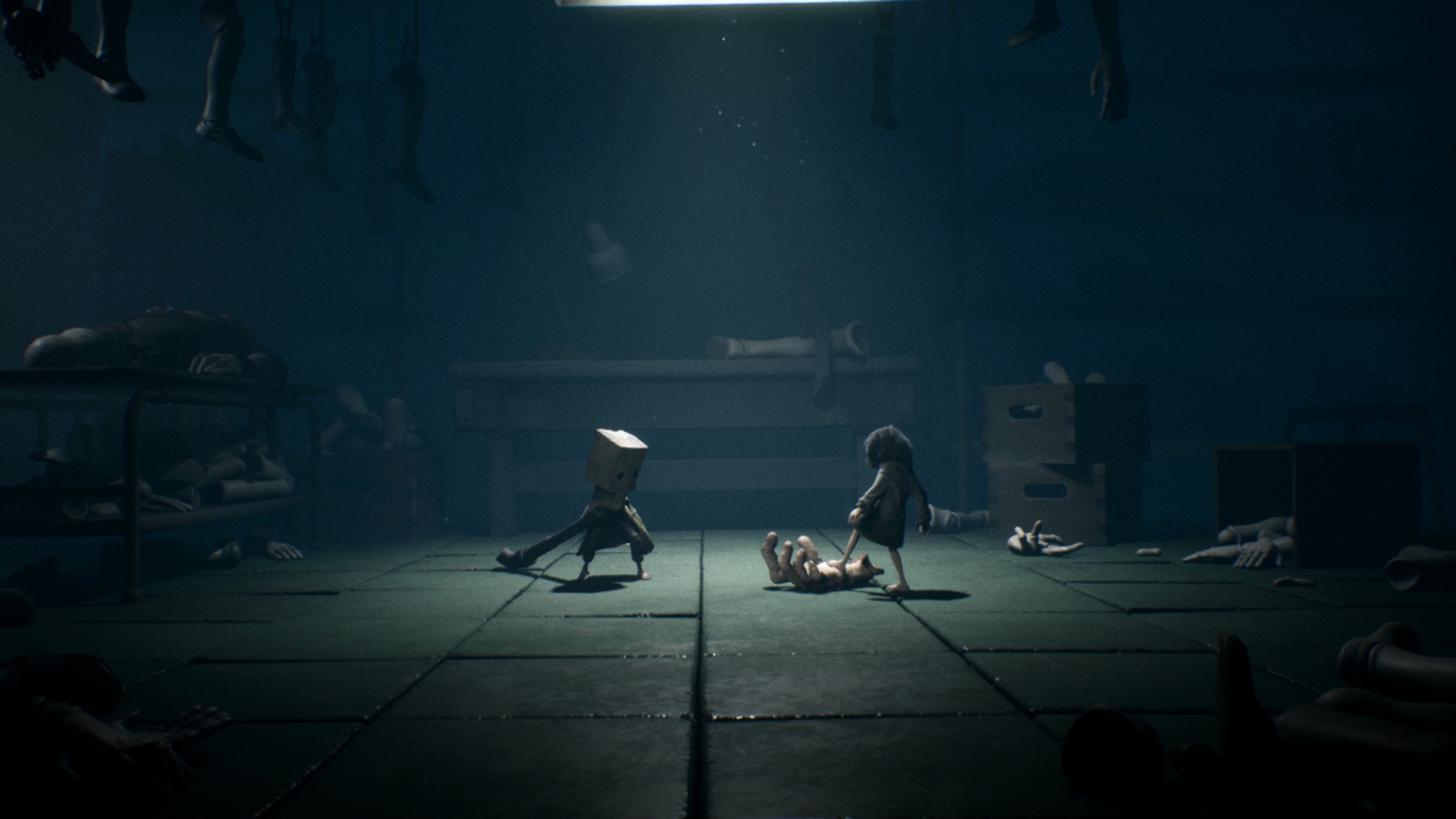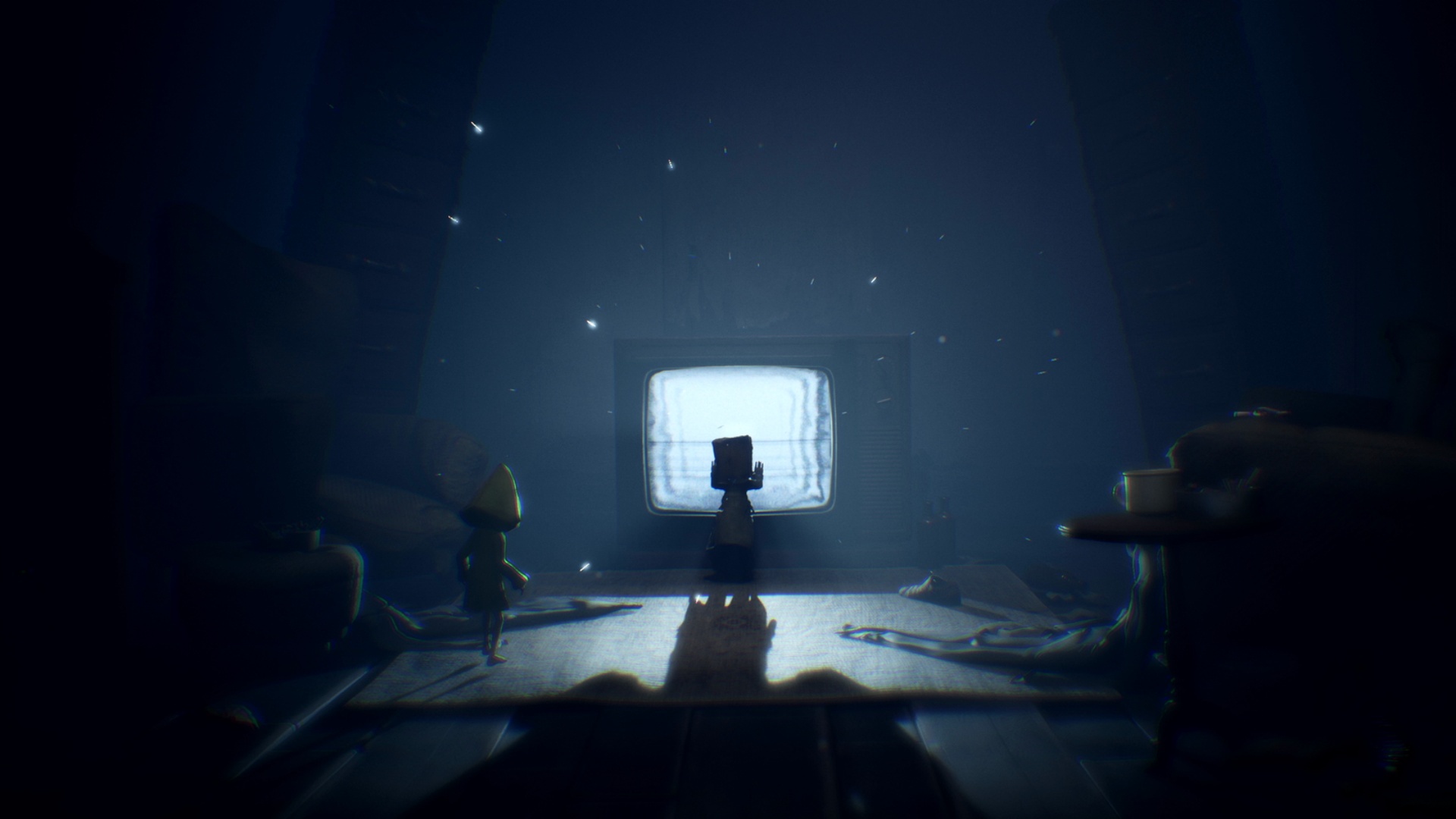Full disclosure. I’m not a fan of horror games, or any game reliant on jump scares really, so you won’t often find me playing the likes of Resident Evil or Phasmophobia. When a review code for Little Nightmares II was made available to Hypertext, however, I jumped at the chance to play the game for two reasons.
One, to see if it lives up to the success of the 2017 original title in the series, and two, to experience Tarsier Studios’ unique take on a survival horror platformer.
So, having poured several suspense-filled hours into Little Nightmares II, here are our thoughts on the sequel.
A new friend
The formula has changed somewhat for this latest iteration in the franchise (we’re assuming there is going to be a franchise if this proves successful). The main protagonist is different, as players take on the role of Mono, a young boy with a box on his head with cutouts through which he can see.
Fans of Six, the yellow raincoat sporting protagonist of the first Little Nightmares is in the game too, although she takes more of a secondary role, assisting with co-op puzzle solving and needing rescuing for the most part.
Whether or not Mono will prove as endearing as Six did is unclear, but we certainly connected with the character and his desire to save other children in the game. We were also quite taken with the way his movements were created, striding instead of walking, and making him feel far different to Six.
In that respect Mono feels a lot more capable than Six does while you’re playing. The odds are still very much stacked against you, but there is clearly an inner determination that is driving this character.
Where the original felt terrifying because your character was vulnerable and fragile at times, fighting for survival, in Little Nightmares II, the protagonist is trying to save others, raising the stakes in a different way.
One other thing that Tarsier Studios did for this game is offer up the ability to earn different masks for Mono, allowing players to change up the weathered cardboard box, provided they achieve specific in-game tasks.
A heavy atmosphere
Sound plays a crucial role in Little Nightmares II as well. In fact, the use of sound throughout the game is quite perfect in our opinion. It sets the tempo for what happens, and at certain points, what does not happen on screen.
Walking in a dark forest where lots of leaves cover the floor for example, will now and again, trigger a strained metal sound, serving as an indicator to players that steel traps are ahead, often requiring the use of branches or other pieces of broken wood to poke and prod in order to find them. Once you do, that steel mechanism makes a spine chilling sound, letting you know just how close you were from being ensnared.
Enter houses and rooms where enemies are in earshot and sound is used again. Everything falls silent, heightening even the most basic of movements. It turns these scenarios into a careful balancing act of needing to urgently complete a task or solve a puzzle, while remaining quiet enough to not alert nearby enemies.
Framing and the mix of light and shadow is another element that Little Nightmares II uses to amp up the tension.
Regarding the latter, only enough of the screen or environment is lit up for you to do the most immediate thing in front of you, which means you never quite know what’s lurking around the corner.
Added to this is moving from one environment to another, prying open a heavy door and slipping through the crack will also see the screen be blocked off by a black bar mirroring the wall of the building. This too can always feel a little precarious as each room could hold a new horror for Mono to deal with.
Overall, Little Nightmares II taps into the same anxiety-inducing gameplay that its predecessor did, with the addition of co-op elements now amplifying it, as it’s not just your life that’s on the line.
A couple of frustrations
For all the things that Little Nightmares excels at, there are a couple that dented our gameplay experience. Most of them are linked to the responsiveness of the controls.
More specifically the inability to perform a desired action, such as jumping from a ledge to try to grab onto a rope or some other suspended object. Running from obstacles that are rolling towards you or could crush you, is also something that is a little hit and miss.
As is navigating obstacles within your environment in general. The point of view for the game is essentially side on as Mono and Six work from one side of the screen to the other. There is also the added element of depth to consider, which is great to showcase an enemy or boss in the foreground, but can sometimes mean that Mono is not walking on the desired trajectory. The result from time to time is getting impeded by debris on the floor you never knew was in your way in the first place.
Added to this is a lack of urgency during co-op portions of gameplay, as it takes a while for the NPC to cotton on to what’s happening and assist with a boost to get over a large object for example.
These are small gripes in the greater scheme of things, but something to note when speed is a necessity in order to hide or escape from an incoming enemy.
Final verdict
In the age of next-gen consoles, a new title like Little Nightmares II would normally be retailing around the R1k-plus mark. The fact that the standard edition is R539 (RRP) for both the PS5 and PS4 (which we reviewed on), means that you’re getting an expertly crafted game for relatively little outlay.
And that’s the important thing here – the subtlety of the survival horror that Tarsier Studios has crafted for Little Nightmares II is really worth the price of admission.
It’s not leaning on charm and bubbly characters like a lot of other platformers do. Instead Little Nightmares II uses an intriguing art style, superb sound effects and mixing, and characters you care for to make it an anxiety-filled ride you can finish within a few days of play.
By the usual platformer metrics, it does a lot more in terms of its world building, and that’s what makes it worth playing, even if you’re not a fan of survival horror like me.





